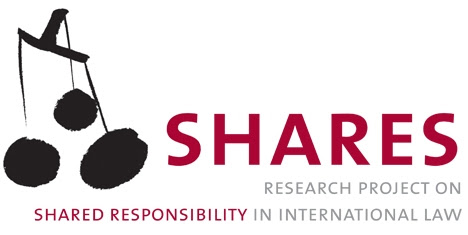Posted by: Have Nienke van der
On the 8 March, the book “The Responsibility to Protect: From Principle to Practice” was launched at Spui25 in the center of Amsterdam. The launch could not have been more timely in light of the continuing reports of atrocities being committed in Syria and the discussions surrounding the inaction of the United Nations Security Council (UNSC). Appropriately so, the topic for discussion was: Why Libya but not Syria? The panel consisted of Prof. André Nollkaemper, Prof. Ko Colijn and Frank Majoor and was moderated by Juurd Eijsvoogel.
Opening the panel discussion, Prof. André Nollkaemper described how the responsibility to protect (R2P) has quickly descended from its finest hour in March 2011 to its deepest crisis in 2012. The intervention in Libya was based on widespread agreement that the threats posed by Colonel Moammar Gadhafi warranted a forceful response. The question is why Syria has not attracted similar attention based on collective action. Given the widespread use of sanctions, the true question for this meeting boils down to why there has been no military intervention. The use of force can only be allowed by the UNSC under Chapter VII of the United Nations Charter. This is somewhat paradoxical, because sometimes unilateral action is the only way to prevent or halt atrocities; a point forcefully made by Daniel Goldhagen in the book. Under current positive international law it cannot be said that the UNSC is obliged to use force. Even though the vetoes of China and Russia were strongly condemned in the political arena, they still have to be characterized as legal.
Consequently, the matter comes down to the question of why the UNSC has not allowed the use of force in this particular case. According to André Nollkaemper, the main political explanation can be found in the fact that the R2P concept was abused in the case of Libya. The NATO used the mandate to protect civilians to secure regime change, despite efforts of the African Union and neighbouring states to come to a negotiated solution. Overthrowing a government can be legal under international law, but in this particular case those conditions were not satisfied. Western Europe and the United States mistook the widespread support for the R2P for support for installing a Western-style democracy. The tragedy in this course of events is that the UNSC’s monopoly on the use of force was bolstered, while political support for military intervention based on the R2P concept has waned.
Frank Majoor continued the discussion by describing the concept of the R2P as a ‘game-changer’ on its way to becoming a legal norm. He stressed that military intervention based on a resolution of the UNSC is only to be used as a last resort and is not a flexible basis for intervention. The more innovative and important contribution of the R2P is the focus on prevention and assistance efforts. According to Frank Majoor, the objective of the NATO in Libya was not on regime change. It was merely the practical result. He stated that military operations, when started, must end in a successful manner. This does not mean that there is no possibility to negotiate about intermediary solutions.
The selectivity critique with which the R2P is now faced is, in his opinion, not completely well-founded. Syria is simply a different case when compared to Libya and lacks the wide regional and public support for military intervention. An active process is still being undertaken under the banner of the R2P. Of those, the diplomatic mission under leadership of former Secretary General Kofi Annan is most likely to lead to some form of success. Whether the ultimate stage of military intervention will be reached remains to be seen. According to Frank Majoor, selectivity is always part of reality, but not an excuse for absolute inaction.
Finally, Ko Colijn illustrated with a compelling set of figures that the classic inter-state war is fading and intra-state conflicts are on the rise. The R2P is one of the ways of responding to this reality, by attempting to strike a balance between neo-colonialism and non-intervention. However, the international community is reluctant to acknowledge it as a legal norm because it is to some degree still seen as illegitimately meddling with a state’s internal affairs. The claim that the R2P has been stretched in the case of Libya to make regime change possible leads to the very complicated discussion of when and which governments can legitimately be toppled. Therefore, the R2P was, from the start, doomed to become a responsibility to select. This is difficult to explain to the world’s population, as expectations have been set high. Nevertheless, the R2P has shifted the burden of evidence from the countries which are in favor of intervention in large scale atrocities to those who are not. This is illustrated by the strong criticism that Russia and China had to endure after their vetoes.
The question remains whether the R2P also contains a responsibility to succeed. Tied in with this is a question which was raised by a member of the audience: whether it is still possible to wage an “old-fashioned civil war”. According to Ko Colijn, the protection efforts should always be targeted at the whole population, which almost inherently means that you support the opposition. It was added that the level of government control is indeed another important difference between Libya and Syria. The discussion focused on several other interesting matters, such as the concrete measures which could be taken in Syria at the moment, whether other international organizations could take action in the future and whether a reform or institutionalization of the decision making process could help properly implement the R2P.
